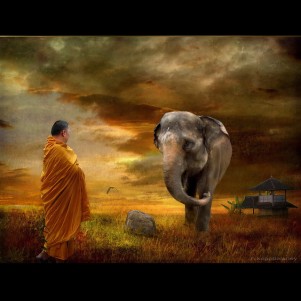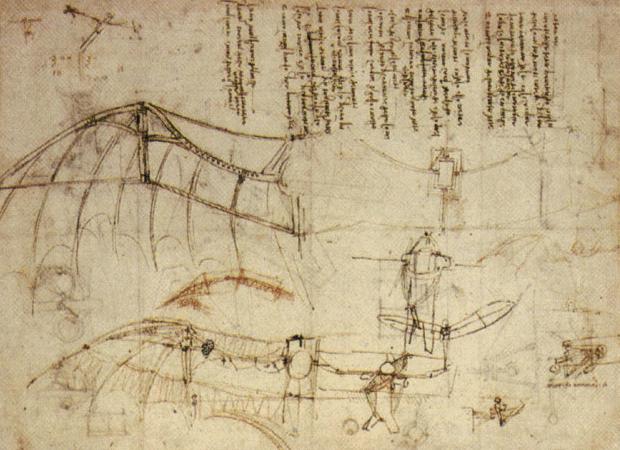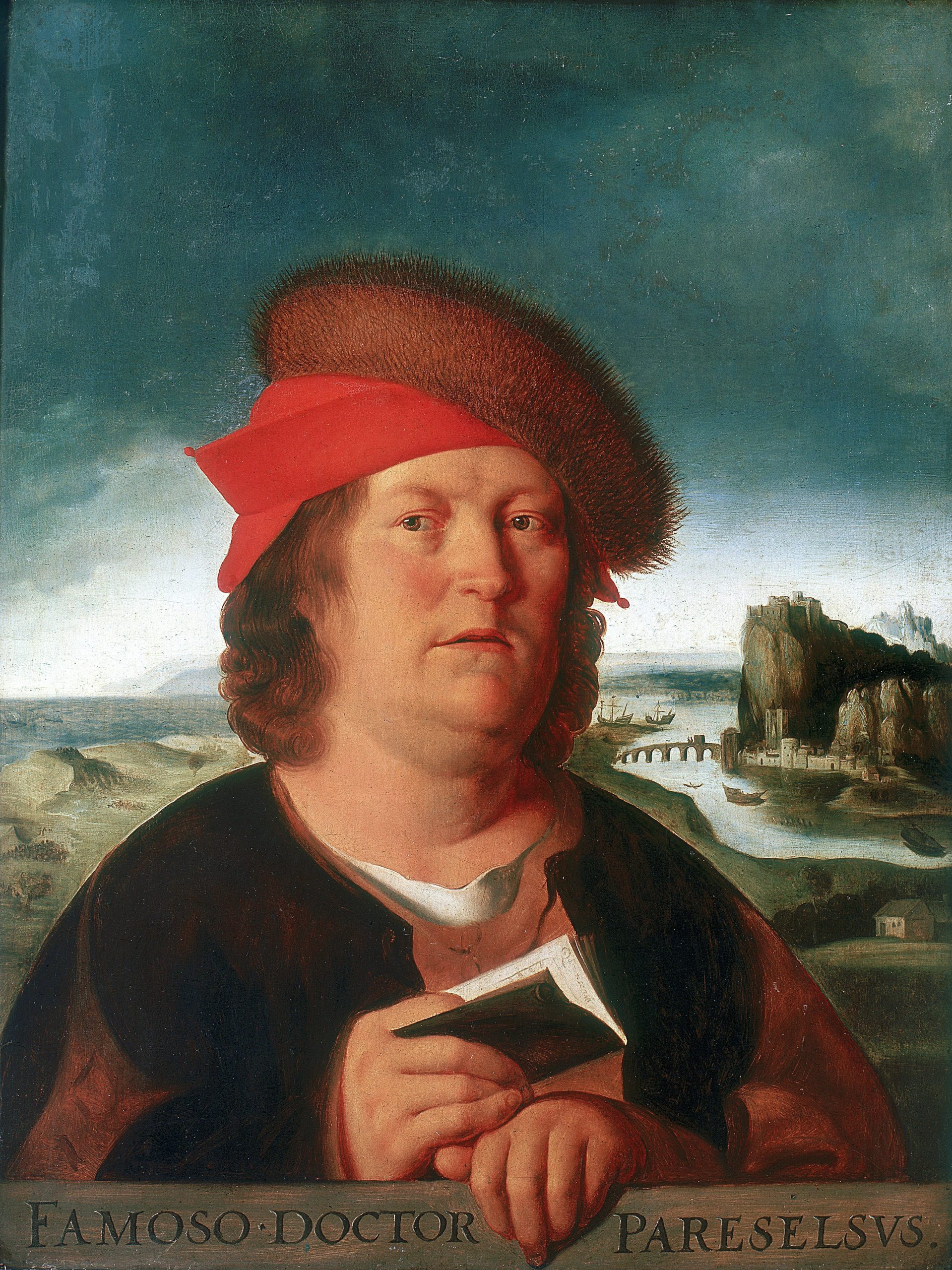Do Animals have Souls?
Article By Julian Scott
 Different people may have different reasons for asking this question: some may want to know if they will meet up with their pet in the next world; others may be interested in the psychic powers of animals; others may be concerned at the inhumane way we treat animals nowadays; and others may wonder whether or not we should eat animals or become vegetarians. All of these questions will be affected by the way we answer the question: “Do animals have souls?”
Different people may have different reasons for asking this question: some may want to know if they will meet up with their pet in the next world; others may be interested in the psychic powers of animals; others may be concerned at the inhumane way we treat animals nowadays; and others may wonder whether or not we should eat animals or become vegetarians. All of these questions will be affected by the way we answer the question: “Do animals have souls?”
The existence of the soul (whether animal or human) cannot be either proven or disproven from an objective point of view, because by its nature it is something immaterial and intangible, and therefore not subject to objective verification. Apart from relying on our intuition, all we can do is look at the ideas found on the subject in the philosophies and religions of the world and contrast them with the prevailing belief that the soul does not exist.
A common idea in many traditions is that of the World-Soul: in Latin this was called “Anima Mundi”, from which we can see that the very word “Animal” comes from the Latin word for Soul.
The World Soul is an invisible living being which animates the whole of creation. It is like an intermediary between God (also called Spirit) and Matter. One Roman philosopher (Plotinus) explains the relation between Soul and Matter with an image: Matter is like liquid sealing wax and Soul is like a seal, which impresses it with a living idea. Matter, on its own, is a mere formless substance waiting to be given life and form, which comes from Soul. Without Soul, then, the world and all its creatures could not possibly exist.
In this way, there is no such thing as an inanimate (in-animate = “soul-less”) object. Everything is pervaded with Soul, even a stone, water, fire, the air. Everything is alive.
Not only this, but also everything in Nature is in some way intelligent and has some form of consciousness. Seeds do not grow blindly into trees, but follow a predetermined plan which is capable of adapting to their environment. Flowers respond to the sun, rhythms, and even (so gardeners say) to the words and intentions of humans. Molecules behave in an organised way – if they didn’t everything would fall apart – not to mention the highly organised behaviour of ants and bees. All of this implies a high degree of intelligence. It may be objected that trees, flowers and animals are just following automatic, instinctive patterns, programmed into them by evolution or nature. On the other hand, the same could be said of us in many cases. How often do we not just react instinctively to situations, instead of freely choosing our acts independently of our conditioning? We are all souls, with varying degrees of freedom and consciousness.
In traditional cultures, mountains, for example, are regarded as great living beings, spirits to be venerated. Stones and precious metals have soul and consequently special powers for magic and healing. They are channels for powerful invisible forces. The earth itself is the body of a great soul, and all the beings of the earth are a part of that great being, the children of a benevolent mother. Only now, because we have stopped believing in Soul, have we become capable of poisoning our own mother, the earth.
Animals, too, are souls; and, like all of us on this earth, they are evolving towards higher levels of consciousness, towards the conscious reunification with the Great Universal Spirit, or ‘God’.
There is a poem by the Sufi mystic, Rumi, which describes the esoteric doctrine of evolution. It goes as follows:
I died as mineral and became a plant,
I died as plant and rose to animal,
I died as animal and I was Man.
Why should I fear? When was I less by dying?
Yet once more I shall die as Man, to soar
With angels blest; but even from angelhood
I must pass on: all except God doth perish.
When I have sacrificed my angel-soul,
I shall become what no mind e’er conceived.
Oh, let me not exist! For non-existence
proclaims in organ tones: “To him we shall return”.
The gist of it is that, over untold aeons, Man has evolved through the mineral, vegetable and animal kingdoms, is now in the human and in the future will continue to evolve to other, higher levels. The same will logically be true of other beings. Thus, the souls of minerals will one day evolve into plants, these into animals and these into humans. And after they have completed the human stage, the souls which are now animals will then become gods. If this is the truth of the matter, then it is evident that animals have souls.
This is the traditional belief – pre-Christian and pre-Cartesian. But already in the fourth century of the Christian era, the theologian St. John Chrysostom labelled the belief that animals could have souls as deeply heretical. The most famous theologian of the Middle Ages, St. Thomas Aquinas, did allow animals souls, but denied that they could be immortal. But, if soul is an immaterial being, and therefore not subject to death, why should it not be immortal?
Here, esoteric philosophy can come to our aid, with its idea of the Group Soul of animals. This is the idea that, generally speaking (with possible exceptions), in the three lower kingdoms of nature souls are not individualised. There are only group souls which, with the progress of evolution, become increasingly sub-divided. So, for example, there would be a group soul of each species of moth, a group soul of Bengal tigers and brown bears, etc. The animals of these species or sub-species would be sent out by their respective group souls and, when they die physically, their souls would return to the group and be merged back into it, losing the temporary individuality that they had. In this way, all the experiences that the individual animal has are input into the consciousness of this group soul and instantly transmitted to the whole of its being. The next animals of that species to be born will then be born with the new information already incorporated.
An image that has been used to describe this process in Theosophical literature is that of a bucket of water from which glassfuls are taken out and slightly coloured with a dye; when the glassful is returned to the bucket, all the water in the bucket is coloured by the addition, and the water that was previously contained in the glass becomes inseparable from the water in the bucket. Its separate identity was only given by the glass that contained it.
The concept of a group soul is a widespread belief among many traditional peoples, as the following extract from the Encyclopedia Britannica tells us: “’Master of the animals’ [i.e. the group soul] in some traditions is believed to be the ruler of the forest and guardian of all animals; in others, he is the ruler of only one species… A complex system of customs governs the relationship between the master of the animals, the game animal, and the hunter. The master controls the game animals or their spirits (in many myths, by penning them). He releases a certain number to man as food. Only the allotted number may be killed, and the slain animal must be treated with respect… The souls of the animals, when slain, return to the master’s pen and give him a report of their treatment. If this system is violated, the master will avenge an animal improperly slain, usually by withholding game. A ceremony must then be held to remove the offence…” . The ‘master of the animals’ is either pictured in human form, or as having animal attributes, or riding an animal, or as a giant animal.
From a scientific point of view, the notion of the group soul could solve a number of enigmas. For example, what is the intelligence that enables natural selection to take place over a relatively short space of time? A century ago, the British Peppered Moth was light-coloured throughout its range. But now it has become dark-coloured in polluted, industrial regions, while remaining light-coloured in rural areas, showing that it has intelligently adapted to blend in with different environments in order to avoid its predators. It implies the existence of a central intelligence (the group soul) which is receiving information from the members of its species and adapting accordingly. Another example given by the biologist Rupert Sheldrake is of some rats which were taught a task and gradually got better at it through practice. The same task was then given to another group of rats on the other side of the world some years later, and they learnt the task more quickly than the first rats had, implying that the knowledge of the first rats had somehow been imparted to them.
The idea of the group soul also holds the key to the difference between human beings and animals. Animals, on the whole, do not have a distinct sense of self. For example, if presented with their own image in a mirror, they generally react to it as if it were another animal. Humans, on the other hand, can recognise themselves as separate psychological entities from a very early age. And this would tally with the esoteric teaching that human souls are individualised, so that when we die, we do not lose our soul-individuality by being merged back into the soul of our group, but continue to exist, and to reincarnate, as individual souls. Animals, for the most part, are only temporarily separate from their group souls, although, with the progress of evolution, they will gradually begin to individualise until they reach the human level of evolution.
There are some exceptions, however. Since not all animals are at the same level of evolution, but some are more advanced than others, there are some animals which are already becoming individualised. These are, according to esoteric teachings, the ones which have been domesticated by man, such as cats, dogs, horses, elephants and apes (the latter being a special case too complex to go into here). Dolphins may be another case, since not only do they show signs of advanced intelligence and consciousness, but there are also references in some ancient works, such as the Vedas from India, which say that they were once domesticated by man. The idea is that, through their contact with human beings, these animals take on some of our characteristics and can be helped in their evolution towards self-consciousness.
Thus, in the ‘mirror test’, some animals, like chimpanzees and dolphins, are capable of learning that it is their own reflection they are looking at. Others, like dogs, do not do so, because their relationship with the world is not primarily visual but olfactory.
Elephants have a sense of mortality, not only of their own, but also that of others. When they discover the remains of one of their companions they examine the bones delicately with their trunk, show that they feel deeply affected by the vision and even seem to try and identify the deceased. Only after a long time in this solemn attitude do they leave the place.
According to the esoteric teachings from the East which we have studied in some of our courses, the consciousness of animals is mainly emotional, while that of humans is mainly mental. This should be clarified by stating that, in esoterism, mind is divided into a lower, selfish mind, and a higher, altruistic mind. The general level that human beings are said to be on at present is that of the lower mind.
However, it is obvious that we also have higher aspirations, and while history perhaps shows humanity to be predominantly selfish, there is a vast literature exhorting us to be unselfish and a few exceptional human beings who actually achieve such unselfishness. The reason for this is that, within our general level of ‘lower-mental consciousness’, we are also developing ‘higher-mental’ elements, especially the more spiritually advanced members of humanity.
So, when we say that animals are primarily developing ‘emotional’ consciousness, this does not preclude them from being capable of thought, imagination or other characteristics of a more mental nature. For example, while most animals are not very good at counting (which involves classifying things into groups, a mental activity), and the general limit for most animals is the number four, ravens have been known to be able to count up to seven. Termites, which, like ants and bees, live in highly organised societies, are capable of building arches and adapting their building activities to their environment. In other words, they seem to have in their consciousness a plan of the building they are attempting to construct. However, these do not appear to be individual abilities, since if the Queen of the colony dies, the whole society collapses and all the individual termites become immediately confused.
Precisely because the general nature of the animal soul is emotional – or ‘astral’ as it is known in esoteric language – animals have a general psychic ability which we humans have lost due to the development of our predominantly mental characteristics. There are many fascinating examples of the psychic powers of animals, such as the ability to foresee earthquakes long before they happen, the ability of pets to tune into their owners’ minds and to know when they are about to leave their office to come home, or the ‘homing instinct’ of certain animals and birds. A case is cited by Rupert Sheldrake of a dog which was lost in America while the family was on holiday and managed to find its way home – 2,000 miles away – several months later! The earthquake prediction capability of animals is so evident – they can be seen panicking and trying desperately to run away several hours before an earthquake happens – that their behaviour has been used to avert major catastrophes in China and elsewhere. Due to the general scepticism, however, this resource is not fully utilised all over the world.
It goes without saying that, since they are evolving predominantly on the emotional level, animals do have feelings! Their feelings may be more or less refined, depending on their evolutionary level. In the same way that human beings are not all at the same level of spiritual evolution, but some are highly advanced and others very undeveloped, so it is with animals. A worm is far less developed than a cobra. A dolphin has almost human qualities, as do many dogs. People who have swum with dolphins say that they have the feeling that the dolphins understand exactly how they feel and this gives them a wonderful feeling of being understood and accepted. Many people have had the same experience with dogs, who will comfort them when they are sad, for example. There is a huge range and variety of levels of being within all the kingdoms of nature.
In view of their capacity for feeling, we should really reconsider the way we treat animals, and especially the way that dogs, cats and monkeys are used in animal experiments, as if they were incapable of feelings.
The whole idea of animal experiments, vivisection, factory farming and other such modern-day aberrations, can be traced back to the ideas of René Descartes, the 17th century philosopher whose most famous phrase is “I think therefore I am”. Quoting once again from the Encyclopedia Britannica: “If St. Francis of Assisi was the greatest friend of animals, René Descartes, the French philosopher, was perhaps their greatest enemy. He believed that animals had no souls and that, as thinking and feeling processes in his view were part of the soul, animals could feel no pain”.
In turn, Descartes’ thinking arises partly from Christian theology’s simplification of the broader ideas of Greek philosophy. Plato, for example, considered that there were several expressions of soul – a vegetative soul, an animal soul and a rational soul; and the alchemists also believed in a mineral soul. But when Christianity came along it simplified this and said that only the human being has a soul. A theological error with tragic consequences.
The Encyclopedia Britannica continues: “Further, Descartes concluded that animals were mere machines… ‘mechanical robots’, as he and his followers called them”. In the 18th century, horrible demonstrations were common, in which ‘scientists’ would tie up an animal and stick sharp instruments into different parts of its anatomy, coldly explaining that its cries of agony were merely ‘reflex reactions’. There is a painting in the National Gallery from that era, where a beautiful bird is shown in a glass chamber from which the air is being gradually extracted, in order to demonstrate how living creatures cannot survive without oxygen – as if that were not obvious anyway, without such cruelty! The painting is entitled ‘The scientific experiment’.
By contrast, the esoteric and traditional idea, as we have seen, is that all beings, right down to minerals, have souls and are alive. The implication of this is that the whole of nature should be treated with respect and courtesy. The important thing, I believe, is to grasp the concept of the evolving soul. The world-soul manifests itself in different levels of being, in order to develop certain qualities. It manifests itself in minerals, in plants, in animals, in humans, in angels, nature spirits, gods… For example, a young child may appear to be less intelligent than an adult because it has not yet developed rational thought. But the child is a soul which may be more highly developed than its physical parents. We should not judge by the outer appearance. Think of a stone: it is a soul, which is at present restricted to a relatively static body. In the future, it will become a plant, an animal, a man, a god… Or think of a human being: at present, most of us are terribly limited by our fears, our worries, our insatiable desires. But imagine a time in the future when we will be entirely free from fear, greed, envy, worry, and full of never-ending love for everyone.
It is a question of seeing the potential in every being, on the one hand, and also of seeing the beauty of each soul expression in its present state. For nature is beautiful in all of its expressions: the hardness or brilliance of a mineral, the purity and energy of a plant, the skill and grace of an animal, the ingenuity of humanity and its heroic struggle. All of these qualities are expressions of Soul, which is present in everything, from the tiniest particle to the largest galaxy.
How, then, should we treat animals, our younger brothers and sisters on the evolutionary path? With the same respect as we should treat all beings, including each other. The problem is that we don’t even have that respect for each other, or for the environment, and this is largely due to the progressive ‘de-souling’ of the world, which has been going on now for many centuries. The first step towards regaining this respect is to understand that the whole world is an expression of Soul and therefore is sacred and worthy of reverence and respect.
We can see how people in traditional societies treated animals, particularly those societies which lived close to nature, like the Celts or the native American Indians. In hunting societies, for example, when an animal is killed, its body is treated with reverence. Even some European hunters today continue this respect for the dead animals. I have seen with my own eyes a dead deer being carried by a hunter in Austria, which had a sprig of larch placed in its mouth. I was told that this was a blessing for the soul of the animal. In Canada, the Quebec Indians used to take a purifying sweat bath before departing on the hunt and made an offering of tobacco to a bear that had been killed. Afterwards the people feasted and danced in its honour.
The Celts may have fished for salmon and hunted wild boar, but their mythology is full of magical stories about these creatures which show a deep respect for their qualities and they even used them as symbols. The salmon, for example, is a symbol of the migration of the Soul to its spiritual home, and consequently of a deep inner wisdom and intuition, as well as a wonderful determination to overcome all obstacles in pursuit of a goal. The wild boar symbolises, amongst other things, the fearless and fierce courage of the warrior.
To change the way we collectively treat animals requires a change in the way we think about them, in fact a change in the way we see the world as a whole. “Esoteric” Philosophy, which is in fact a natural philosophy, could be the beginning of a ‘new’, or rather, timeless way of thinking, which can help us to recover a sense of love and respect for all creatures, great and small.
Image Credits: By Hartwig HKD | Flickr | CC BY-ND 2.0
The entity posting this article assumes the responsibility that images used in this article have the requisite permissionsImage References
By Hartwig HKD | Flickr | CC BY-ND 2.0
Permissions required for the publishing of this article have been obtained
Article References
Blavatsky, H.P. Have Animals Souls?(From H.P.B. teaches – An Anthology compiled by Michael Gomes) Encyclopaedia Britannica - Article entitled Master of the Animals Plotinus The Enneads Sheldrake, R. Dogs that know when their owners are coming home




I personally looked for a couple of days for such an article in the internet. And I am happy to have found it al last. Because I came to similar conclusions on my own. My thought process was triggered mainly as I learned – only some time before – that Descartes considered animals as a sort of machines.I knew for sure that this cannot be true. My problem remains that the soul, as I see it, cannot be regarded as something that evolves, like the brain, but rather as a “divine spark”, that is immortal not obeying any “material” force. I am accepting Darwin’s evolution in general, except for the soul. And I do not accept the idea of a “selfish gene” either.
In other respect,I am in utter astonishment that nobody commented your article for so many years! Why is it that almost nobody appears to have the necessity to see the world in a new way???